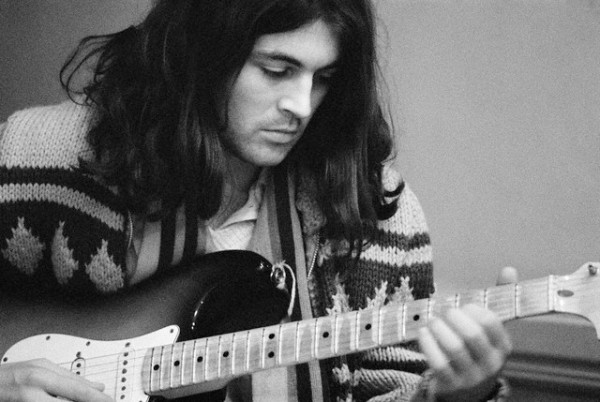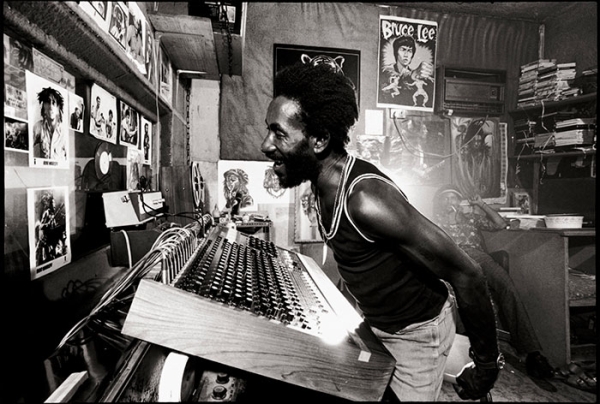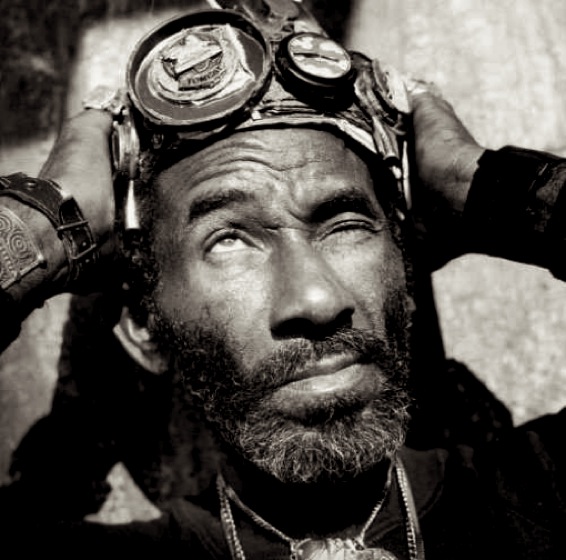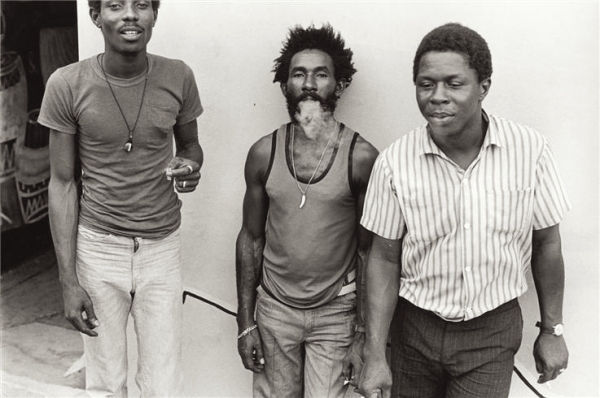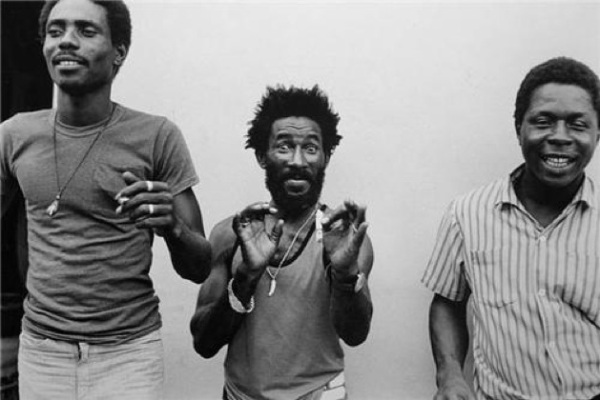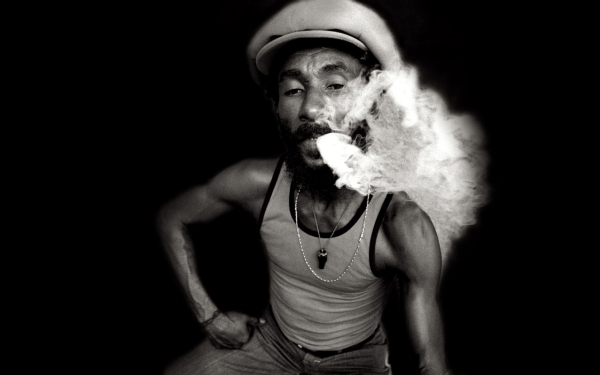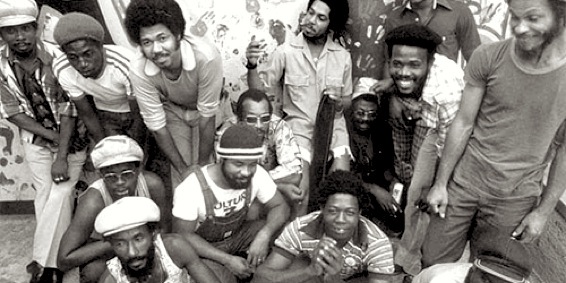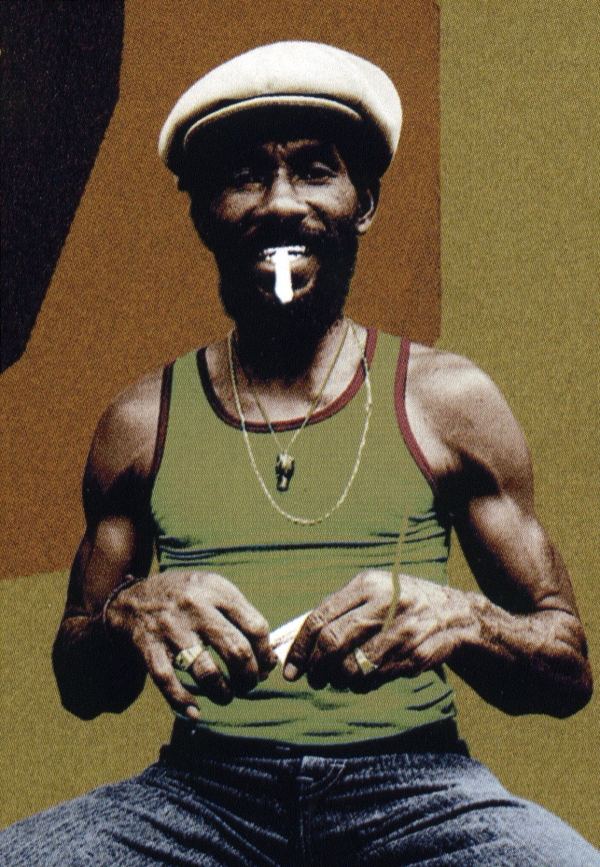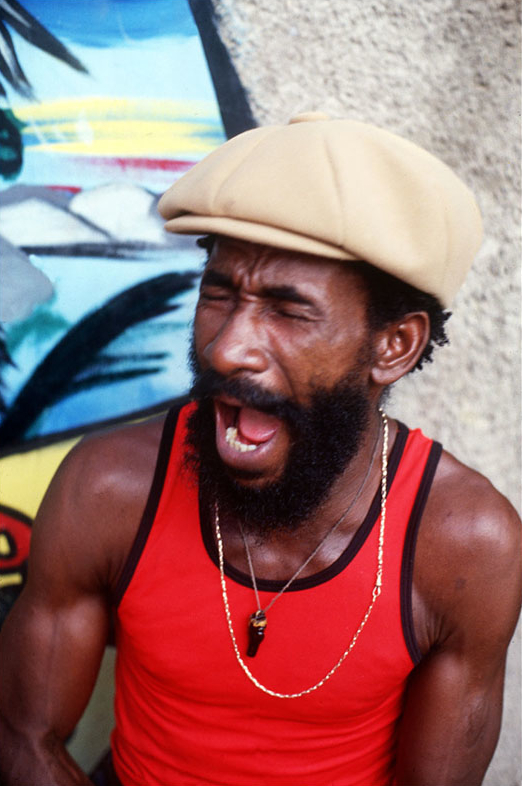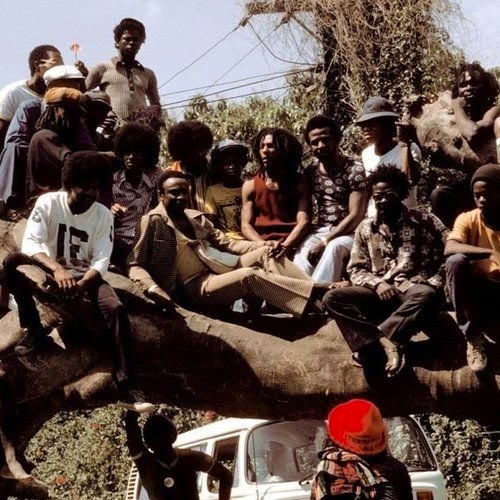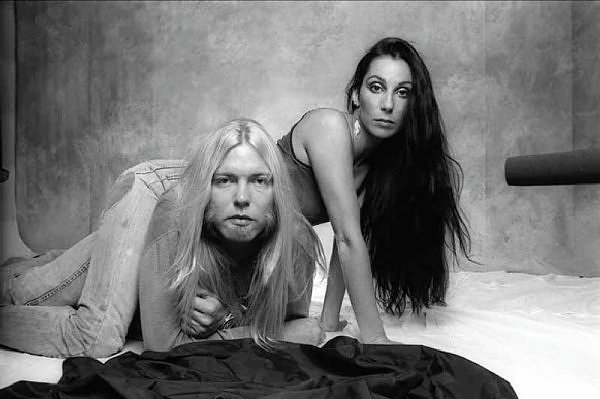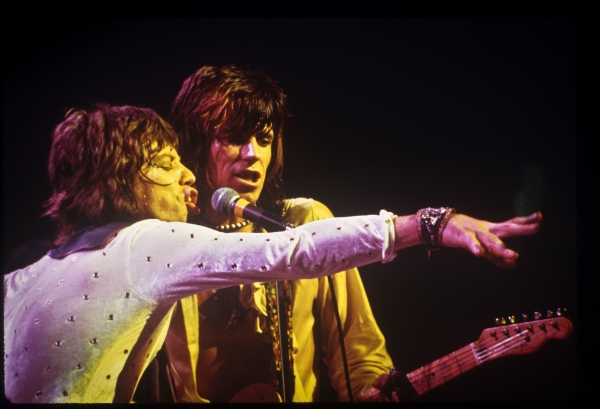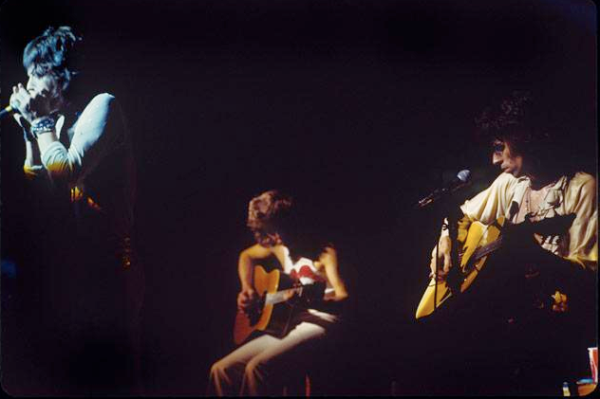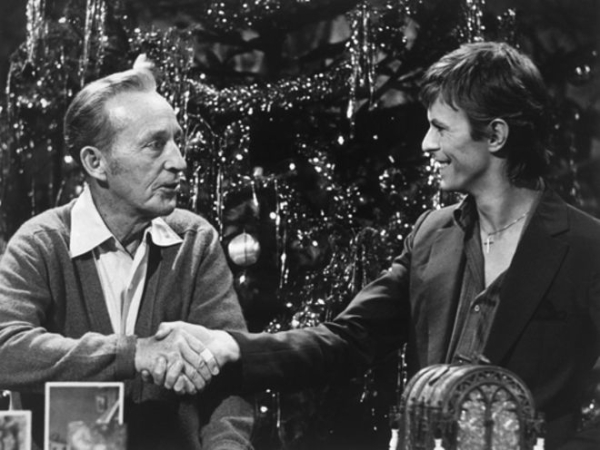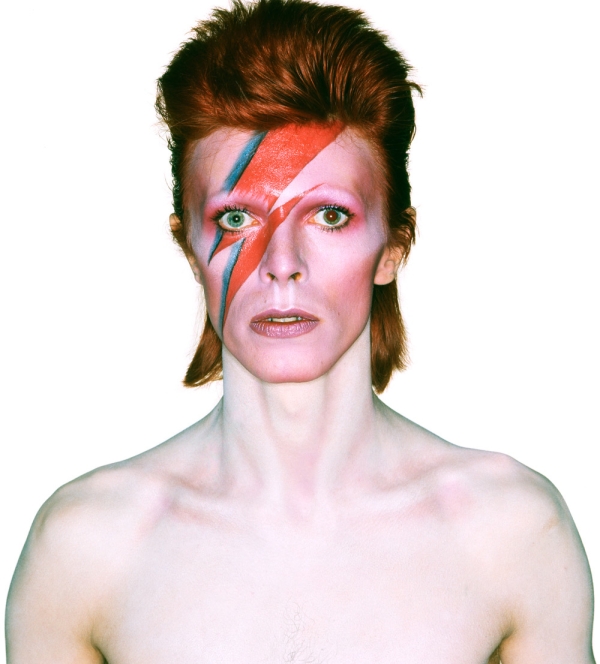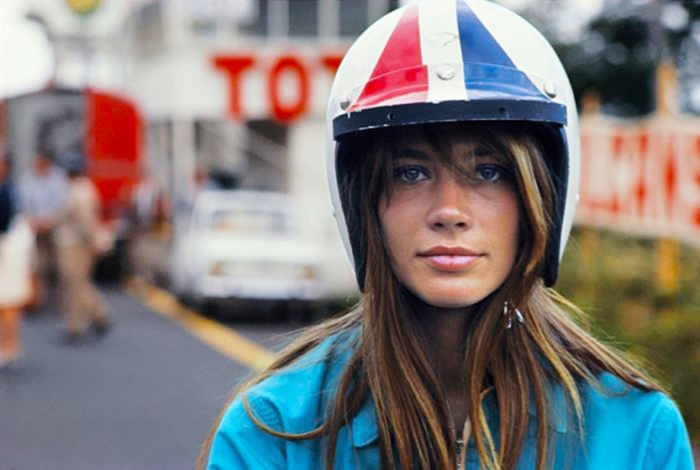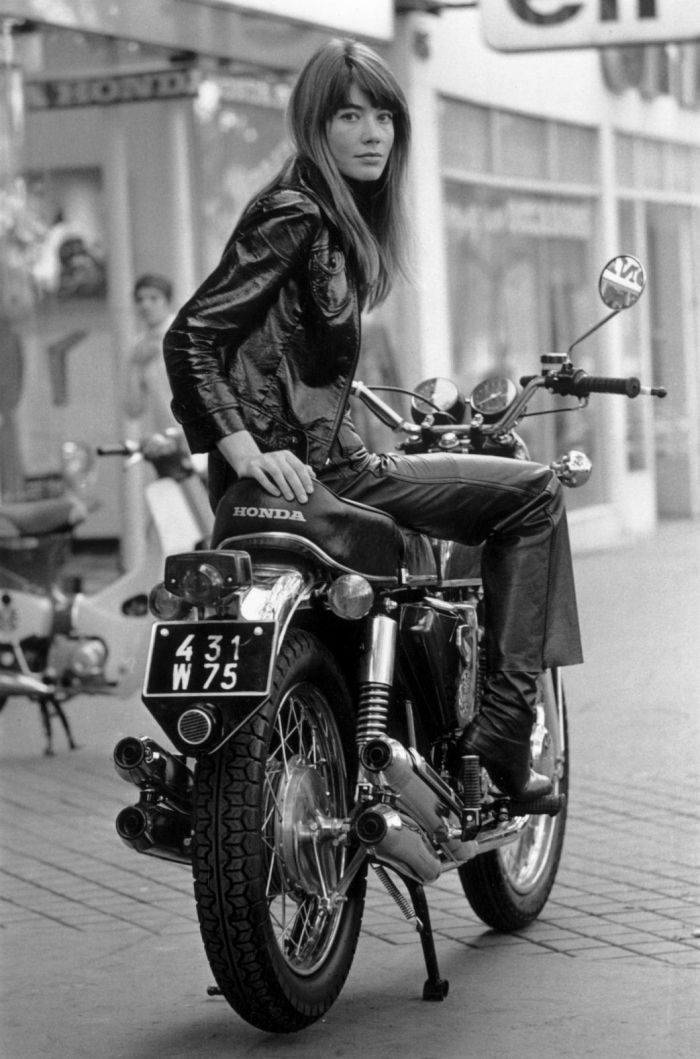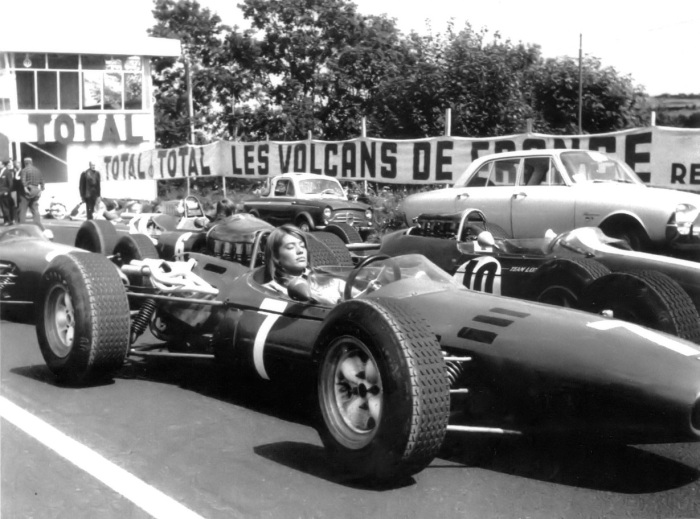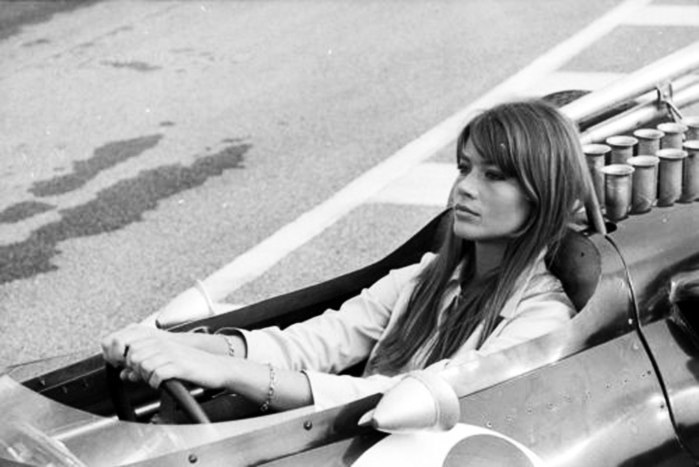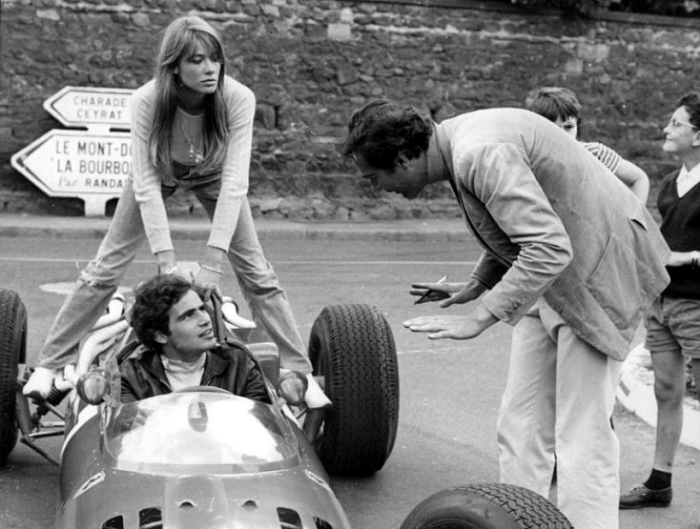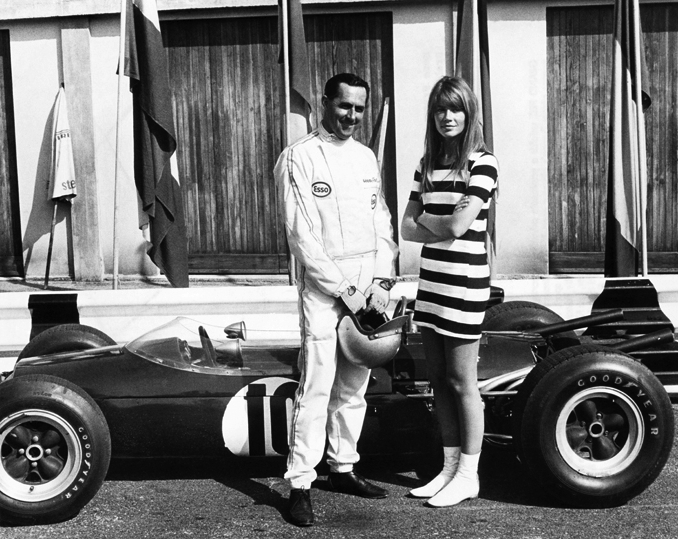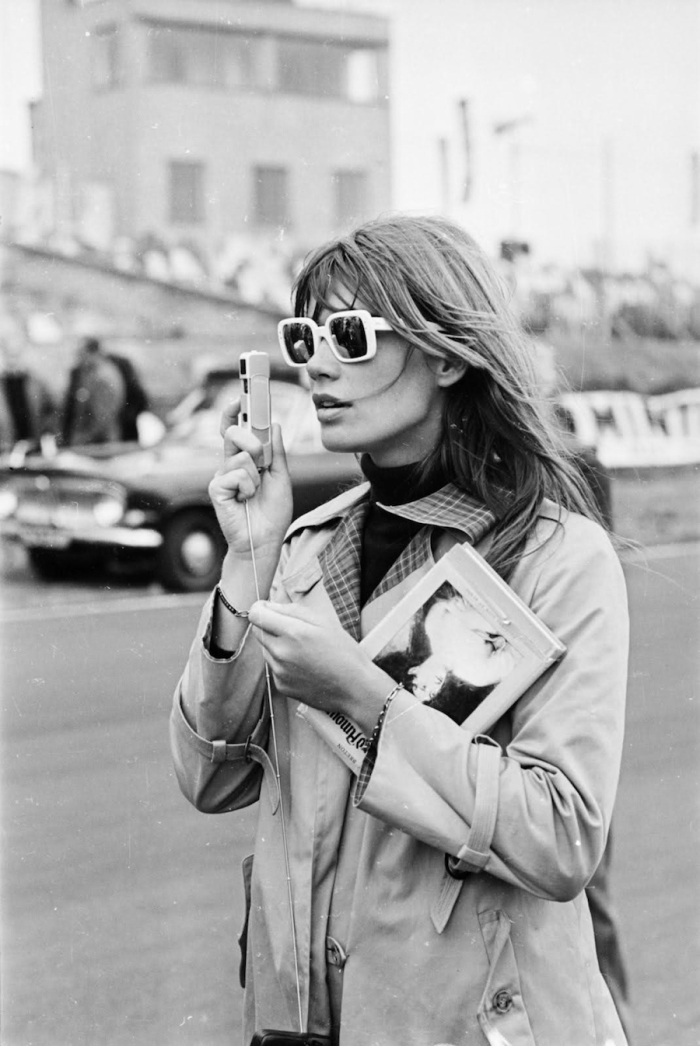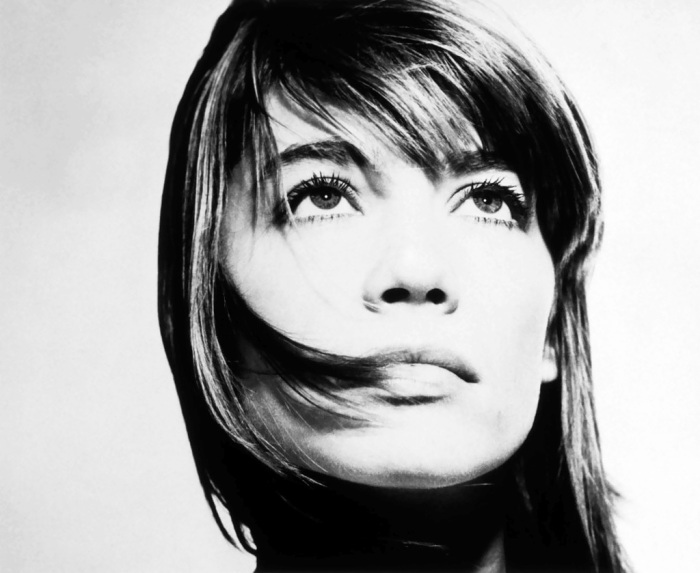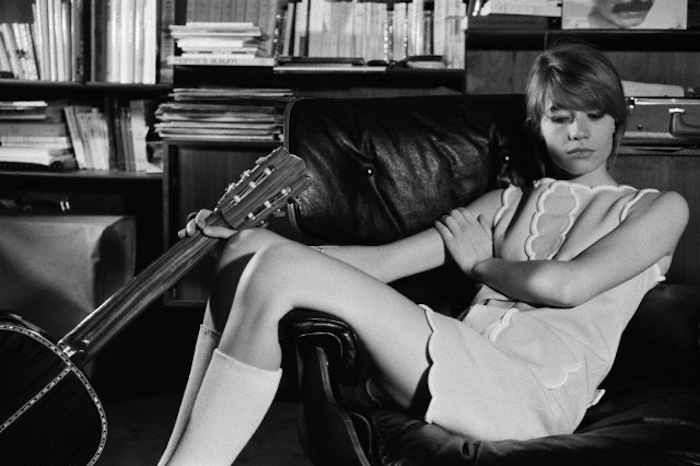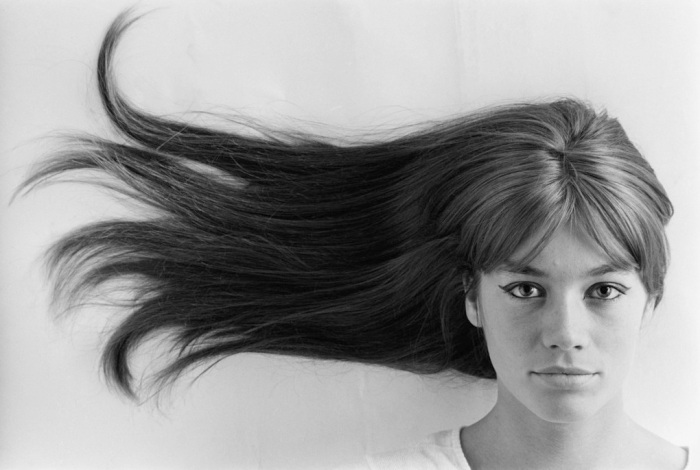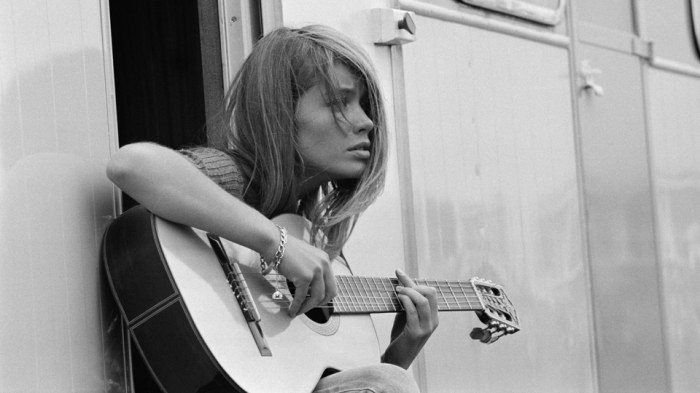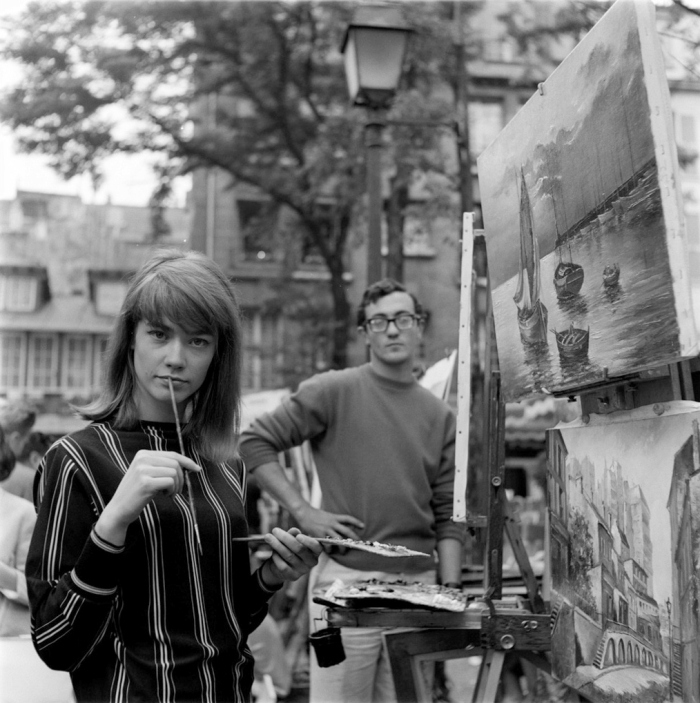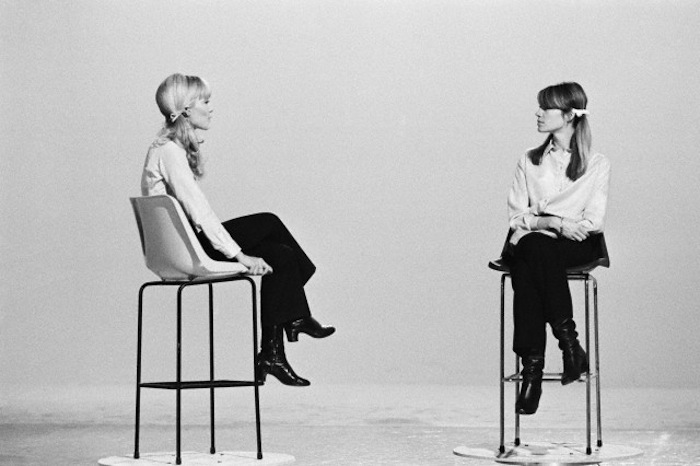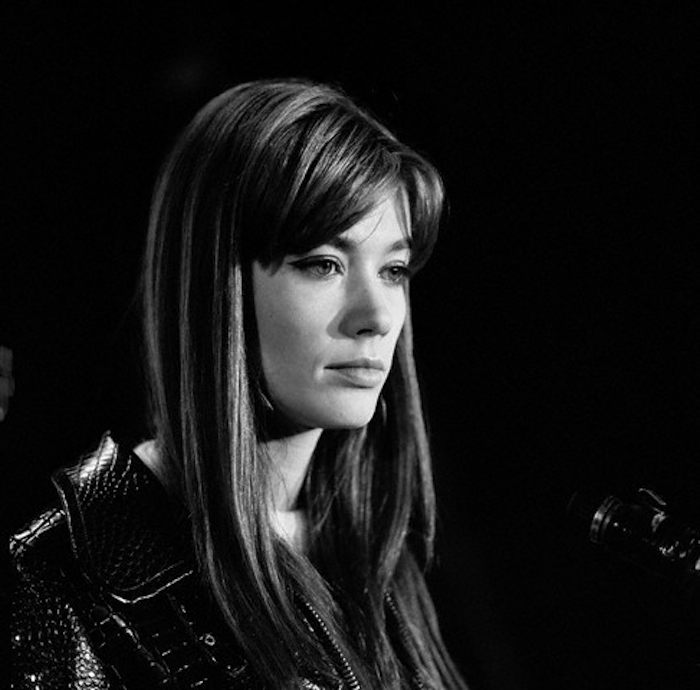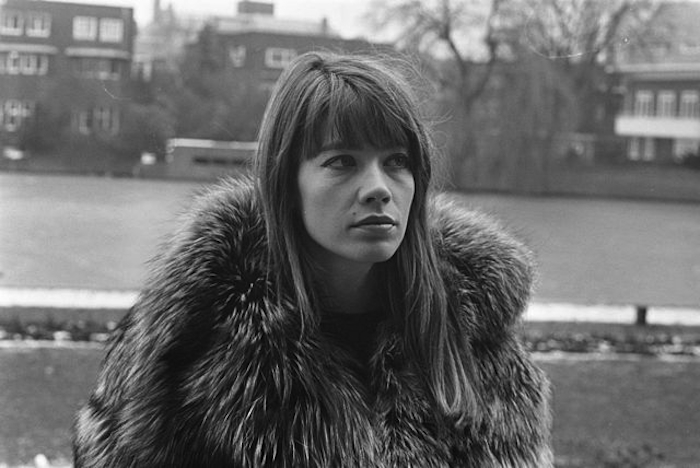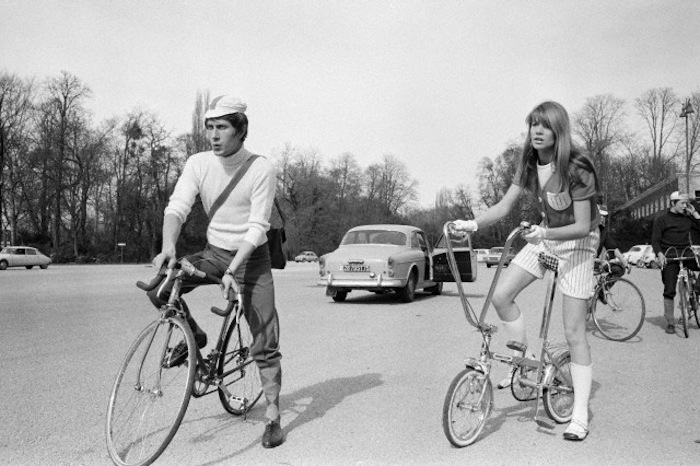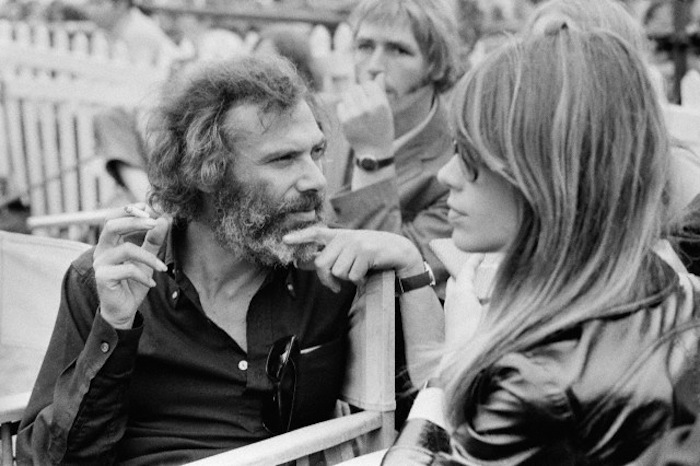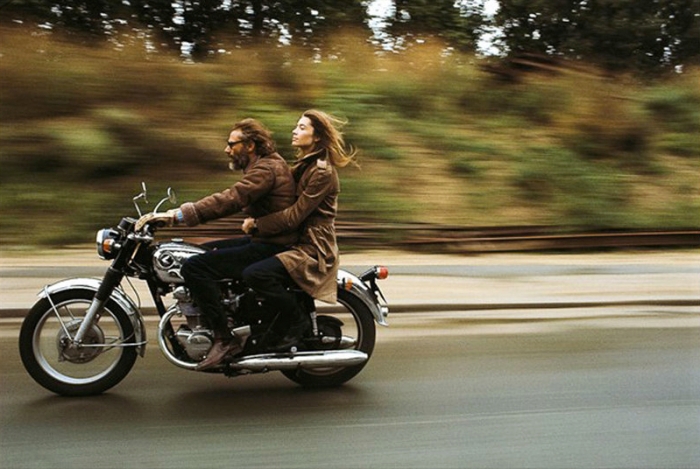-
![regan warhol jagger]()
Andy Warhol cultural icon, and Mick Jagger of The Rolling Stones – Image by © Ken Regan
-
It was spring of 1975, and The Rolling Stones were gearing up for their epic Tour Of The Americas (TOTA)– which they would later kick off in NYC by performing “Brown Sugar” on the back of a flatbed truck driving down 5th Ave. Looking for a place to rest up, rehearse for the tour, and work on songs for their upcoming album, Black and Blue, the boys rented their pal Andy Warhol’s pad (for 5k a month), and got busy being themselves. Let’s just say their presence did not go unnoticed by their buttoned-up neighbors:
“Throughout April sensationally loud music welled through the windows, into the ruts and hollows over the tangled crab-grass of an estate in Montauk, Long Island. Residents of the Ditch Plains trailer park were woken in the night – yapping dogs, even wolves, the loud grief of coyotes. From East Hampton to New York the word spread with the ferocity of a brush fire: The Rolling Stones were rehearsing!”
-
![Stones montauk 1975 regan]()
June, 1975 — The Rolling Stones, with guest percussionist Ollie E. Brown, outside their rehearsal room at Andy Warhol’s Montauk Church Estate – Image by © Ken Regan. Although the Stones tried to keep a low profile, their fans found their hide away. Andy Warhol remembered, “Mick Jagger really put Montauk on the map. All the motels were overflowing with groupies. Two girls with no hair and black cats on leashes followed them all the way to Montauk. Mr. Winters, the caretaker of the estate, found them hiding in the bushes!”
-
-
![ROLLING STONES OUTSIDE REGAN]()
June, 1975 — The Rolling Stones, with guest percussionist Ollie E. Brown, outside their rehearsal room at Andy Warhol’s Montauk Church Estate – Image by © Ken Regan. Following Mick Taylor’s leaving the band, Ronnie Wood stepped in to (try and) fill his shoes. Wood was still a member of the Faces while he toured with the Stones on TOTA, and recorded with them on Black and Blue. The Faces wouldn’t officially announce they’re breakup until Dec. 1975, and the Stones announced Wood as an official member of the band in Feb. 1976. “I remember learning 150 of their repertoire (laughs). I gave up trying to remember which key each one was in or the chord sequence to a lot of them. I did a lot of it by feel in the end, you know. Had to, it’s impossible to log all of those songs. It was intense– to get hit with all of those Mick Taylor lines, to echo what Brian had done, then to add my own bluesy input to it all.” –Ron Wood
-
Here’s a great little read from Montauk Life that recounts the days of Andy Warhol’s move to East Hampton, The Rolling Stones’ legendary visit to the Church Estate that Warhol owned, and other interesting tidbits of that time:
___________________________________________________________________________
-
If there was one thing Andy loved more than fame, it was money. That’s what first brought the intensely urban Warhol to wide open Montauk. A long time visitor to the Hamptons proper, he and Paul Morrissey, director of many of Andy’s early avant garde films, decided a home here would be a great investment. Ironically, they turned to East Hampton realtor Tina Fredericks, who had been one of Andy’s early champions when art director of Vogue in the mid-1950′s.
One rainy weekend in early 1972, Andy and Paul piled into Tina’s Eldorado for a tour of the East End. She started showing them houses in the primest of areas of the East End – Southampton’s tony Gin Lane, East Hampton’s posh Further Lane and Ocean Avenue, but nothing moved Andy. It wasn’t until they drove into Montauk that eccentric Andy began to perk up.
According to Tina, it was the unlikely sight of the absurd architecture of the Memory Motel and Ronjo Motels that caught Andy’s eye. It seems the mix of Polynesian, Tudor, and “Motel Six” design amused Andy. Driving east of town along the ocean Tina brought them to a dramatic compound, overlooking the Atlantic on the wind swept cliffs of Montauk.
-
![CHURCH ESTATE PETER BEARD 1972]()
1972 — Mr. Winters on his tractor at the Church Estate, Montauk. — Image by Peter Beard via
-
The Church Estate was a collection of 5 classic, clapboard houses built in the 1920s. Set on 20 acres high above the Atlantic, they had been designed by noted architect Stanford White. The main house, with 7 bedrooms, 5 baths, 4 stone fireplaces and large living areas would be perfect for entertaining. The 4 smaller cottages would be guest accommodations. They agreed to the price and Andy and Paul split the $225,000 cost. As it turned out, this good investment was the best buy of Andy’s life. Currently on the market for a cool $50,000,000, it’s the most expensive home for sale on the East End, and one of the most expensive in all of America. (Currently owned by J.Crew’s Mickey Drexler.)
Although Andy was happy with his new house, his primary concern that first year was finding a tenant to help with the bills. That started a long parade of celebrity renters for the Montauk home. That first year Andy rented the main house to Lee Radziwill, Jackie Onassis’s famed sister. In her recent bio, Happy Times, Lee remembered that Summer fondly. “The main house had a floor of huge old flagstones and two enormous fireplaces opposite each other. It smelled of cedar and the sea.”
-
![Warhol_home_in_Montauk]()
1971 — Andy Warhol’s beach home– the Church Estate, Montauk, Long Island, New York. via
-
Andy she saw in a different light – “He was almost allergic to fresh air, but once in a while felt obliged to leave the city and check in on the happenings at his place in Montauk. Here a somewhat different person was on display. He loved children and was inventive with them, creating activities in which they became totally abandoned such as when he sat them down at a large round table in the living room to show them how to edit a film in a simple way. He was something of a pied piper, always keeping their attention, always admiring and encouraging them at whatever they did.”
“We spent long lazy afternoons on the beach, talking and burying each other in the sand. At times like this, Andy wasn’t as strange as he initially seemed, but revealed himself as a keen, subtle observer of everything around him.”
“He had a simple supper every night at six before going out, seven nights a week to observe. He didn’t eat the rich food at the dinners and parties that he constantly attended. He was too fragile after the attempt on his life and his serious operation.”
-
![Andy Warhol and Lee Radziwill]()
1973, New York — Andy Warhol and Lee Radziwill – Image by © Conde Nast Archive/Corbis. Jackie Kennedy Onassis’s sister, Lee Radziwell rented the largest of the five houses on Andy Warhol’s property in Montauk during the first summer he bought it. Lee was there to supervise the “rescue” of Grey Gardens where her eccentric East Hampton cousins, the Beales, lived. Jackie visited Lee several times that summer. It was Lee Radziwell’s idea for the Maysles Brothers (who had filmed The Rolling Stones’ Altamont concert for the documentary “Gimme Shelter”) to film her cousins which became the famous documentary, Grey Gardens. via
-
That Summer, Jackie came for a number of visits with young Caroline and John John. Andy remembered, “They used to run around throwing balloons filled with water at everybody. They were always having egg fights. John John was the ring leader. He was about 12 then. He told the funniest stories and the best jokes. John John and Caroline loved to go down to the candy store to look for pictures of themselves in the movie mags.”
Andy was so proud of his association with the first family of America, that Bob Colacello Interview editor and one of Andy’s closest companions, remembers – “Andy joked about putting up gold plaques that said ‘Lee slept here’ and ‘Jackie slept here.’” The shy boy from the wrong side of the tracks had come a long way.
-
![peter beard 1976]()
1976 — Peter Beard (photographer, writer, painter, playboy, you-name-it-he-is-it) and friends. – Image by © Larry Fink
-
It seems one of the reasons Lee spent 1972 in Montauk had to do with Andy’s charismatic next door neighbor, Peter Beard. Andy described him as – “one of the most fascinating men in the world … he’s like a modern Tarzan. He jumps in and out of the snake pit he keeps at his home. He cuts himself and paints with the blood. He wears sandals and no socks in the middle of Winter. He lived in a parked car on 13th Street for six months. He moved when he woke up and found a transvestite sleeping on the roof.” He also thought Peter was one of the best looking men he’d ever seen. So did Lee.
Peter was both Andy’s neighbor and artist in arms. Unlike some who built his reputation around Andy, Peter had established himself as one of the great nature and fashion photographers long before meeting Andy. Grandson of a well to do western family, Manhattan/England/Yale educated, he began his career while still in college, signed to a $12,000 a year contract by Vogue in 1955. That was also the year he first traveled to Africa, a trip that would forever change his life and work. His landmark work, The End of the Game (1963), a collection of essays and photographs on the rapid decline of Africa and it’s wildlife, is a testament to early ecological and sociological sensibilities.
-
![mick jagger andy warhol montauk]()
Montauk, 1975 — Mick Jagger, Catherine Deneuve, and Andy Warhol – Image by © Peter Beard
-
Peter first came to know Andy through his uncle, Jerome Hill, one of the early partners in Andy’s Interview magazine. Beard in turn came to know Lee when he was assigned a photo shoot of The Rolling Stones’ Exile on Main Street tour in 1972. Long remembered as one of the most decadent rock and roll campaigns of the overly indulgent ’70s, the frenzy to report this momentous event was such that the most prominent papers of the day battled to cover this bacchanalian tour. Rolling Stone magazine topped them all by assigning Truman Capote to follow the tour, and Peter Beard to photograph.
While on tour Peter became good friends with Mick Jagger. They partied they way across the country in the “Lapping Tongue” – the Stones speciality outfitted DC-7. As has been well documented they flew considerably higher than the clouds that surrounded them. Half way through the tour, Truman Capote met the group in Kansas City. In tow was his new best friend, Lee Radziwill. The mix of rock royalty and Fortunate Four Hundred did not work well. Jagger hated Capote’s mincing manners, and Capote called Mick – “…a scared little boy… about as sexy as a pissing toad.” Stones guitarist Keith Richards welcomed the cultured Radziwill by banging on her hotel door that night, screaming “Princess Radish… C’mon you old tart, there’s a party going’ downstairs!”
-
![peter beard bianca mick jagger]()
Biance Jagger, Mick Jagger –Images by © Peter beard
-
The final date of the tour was scheduled for Mick’s birthday – July 26, at Madison Square Garden. Afterwards a lavish party was given for the 29 year old Stone by Ashmet Ertgun, president of Atlantic Records, at his palatial roof top suite atop the St. Regis Hotel. Overlooking Manhattan, the creme de la creme of arts and society came to honor the pouting prince– including Andy, Peter, Truman, and Lee. Andy provided the high light of the party. A naked girl popped out of a towering birthday cake, and twirled her silicon tits as a dozen black tap dancers provided a chorus line. The New York Post reported, “In the perfumed twilight of the Roman Empire unspeakable things went on. Are we entering that same twilight?”
The next day Peter invited the exhausted Mick and bride Bianca, to visit his house In Montauk for a quick R&R. They flew into Montauk airport and spent the next few days relaxing at the shore, water skiing on Lake Montauk, and walking the beach. It was an introduction to Montauk that would lead to a much longer stay.
-
![rolling stones ken regan montauk]()
1975 — The Rolling Stones, with Ollie E. Brown, at Warhol’s Montauk home – Image by © Ken Regan
-
By the Spring of 1975, the Stones were in the midst of planning their next American tour. What better place to cool out and prepare, than quiet Montauk? Andy rented Mick and the boys the compound for a princely sum of $5,000 a month, and the Stones began rehearsals for what would become Black and Blue. As was then reported: “Throughout April sensationally loud music welled through the windows, into the ruts and hollows over the tangled crab-grass of an estate in Montauk. Long Island. Residents of the Ditch Plains trailer park were woken in the night – yapping dogs, even wolves, the loud grief of coyotes. From East Hampton to New York the word spread with the ferocity of a brush fire– The Rolling Stones were rehearsing!”
Andy and Jagger first met in 1963, when The Rolling Stones were invited to play a birthday party for then Warhol starlet, Baby Jane Holzer, at the New York Academy of Music. Over the years the artistically inclined Jagger kept tabs on the musically inclined Warhol. Mick was such an admirer, that in 1972 when the Stones formed their own record company, they tapped Andy to design their logo. With characteristic flair Andy came up with the stylized Jagger mouth and tongue that would grace all their albums. Andy also designed the infamous cover for that year’s release, Sticky Fingers-- a cover shot of Jagger from the hips down, in skin tight jeans, with a fully working zippered crotch!
-
![mick jagger walking montauk]()
Mick Jagger taking a walk in Montauk where The Rolling Stones were rehearsing for 1975 Tour of the Americas. – Image by © Ken Regan
-
Andy Warhol visited the boys often that Summer. Although the Stones tried to keep a low profile, their fans found their hide away. Andy remembers, “Mick Jagger really put Montauk on the map. All the motels were overflowing with groupies. Two girls with no hair and black cats on leashes followed them all the way to Montauk. Mr. Winters – the caretaker of the estate – found them hiding in the bushes!”
At times the attention went beyond mere fan worship. Andy remembers playing with Mick and Bianca’s then 4 year old daughter, Jade. As he often did with small children he delighted in showing her how to draw and paint. At one point Andy was searching for some material, opened a drawer and much to his surprise found a loaded gun. Jade said,“That’s my daddy’s!” Turned out, Jagger was being hounded by a pair of Rolling Stones obsessed fans that summer, and felt the need for a little extra protection.
-
![keith richards cook montauk regan]()
Keith Richards cooking in the kitchen of Andy Warhol’s Montauk home where The Rolling Stones were rehearsing for their 1975 Tour of the Americas. – Image by © Ken Regan
-
Little Jade was Andy’s favorite Jagger– “I love Mick and Bianca, but Jade’s more my speed. I taught her how to color and she showed me how to play Monopoly. She was four and I was forty-four. Mick got jealous. He said I was a bad influence because I gave her champagne.”
One of Mick’s favorite hang outs that summer was the Shagwong on Main Street. A little rougher around the edges in those days, it’s main attractions were a pool table and a juke box full of rock and roll. Only problem was, the only Stones tune on it was the by then golden oldie “Get Off My Cloud.” They’d play it every time Mick came in for a drink. One night Mick had enough. After 10 Pina Coladas, and the same number of “Get Off My Cloud”, Mick got off his bar stool, put a quarter in the box, punched up the classic disco tune – “Stand, Stand, Stand” – and started singing along. The whole place got quiet at first, and then exploded.
-
![keith richards phone]()
Keith Richards on phone in the kitchen of Andy Warhol’s Montauk home where the Rolling Stones were rehearsing for their 1975 Tour of the Americas. – Image by © Ken Regan
-
Now as then, Jimmy Hewitt owned the Shagwong. He remembers Mick and Bianca would come in once or twice a week. “They were great for business. We had girls camped out three deep up and down the sidewalk waiting for them!” Mick would take up a stool at the end of the bar, where he’d sit with his private bottle of Grand Marnier. Bianca would waltz into the kitchen to pick out dinner, and kibitz with the crew. She’d roll up the sleeves of her Yves Saint Laurent dresses and open clams. Many nights after closing, Mick would invite Jimmy back to the hose to hear the Stones rehearse. The only problem was the nocturnal Stones wouldn’t even start 2 or 3 in the morning. By then it was time for Jimmy to go home.
Of course one of the indelible remains of the Stones stay in Montauk, is the song “Memory Motel.” Named for the bar and motel of same name, this lament for a lost girl has become one of the Stones signature tunes.
-
“Hannah honey was a peachy kind of girl
Her eyes were hazel
And her nose were slightly curved
We spent a lonely night at the Memory Motel
It’s on the ocean, I guess you know it well
It took a starry to steal my breath away
Down on the water front
Her hair all drenched in spray”
(Jagger/Richards – C- Rolling Stones/Virgin Records 1975 )
-
As atmospheric a tune as it was, the truth is, the Memory Motel was not the center of the Stones stay in Montauk. Peter Beard remembers taking Mick there one afternoon, with disastrous results. It seems the owners, an older couple, didn’t much care for the Stones. The bartender as much as told Jagger that to his face. So far as Peter can remember, that was the only time they set foot in the place! As for the “honey of a girl” mentioned in the song, it wasn’t some lovely Montauk lass Mick was pining after, but the Stones traveling photographer, Annie Liebowitz.
One girl who many in Montauk pined for, was a certain Barbara Allen. The pretty young wife of Joe Allen, one of Andy’s Interview backers, Barbara attracted attention where ever she went. Years before she and Peter had a fling. That summer married Mick seemed to find her company very enjoyable. According to Bob Colacello, he was inadvertently present at a night time rendezvous while staying at Peter Beard’s house. One hot summer’s night he was dropping off to a peaceful night’s sleep, when through the open window comes none other than Mick! Seemed he’d mistaken Bob’s room, for Barbara Allen’s. Poor Bob, it was the closest he’d get to having a Rock ‘n’ Roll star in his bed that summer.
-
![ROLLING STONES KEN REGAN]()
Ken Regan with The Rolling Stones at Camera 5 Studios – Image by © Ken Regan
-
TSY RELATED POSTS:
-
THE ROLLING STONES @ ALTAMONT | WE’RE NOT IN WOODSTOCK ANYMORE…
THE ROLLING STONES’ 1972 AMERICAN TOUR | STP– STONES TOURING PARTY
KEITH RICHARDS & GRAM PARSONS 1971 | SUMMER IN EXILE @ VILLA NELLCOTE
THE ROLLING STONES | ROAD WORN, FORLORN & ALMIGHTY GUITAR PORN
1969 DESERT TRIPPIN’ | GRAM PARSONS, ANITA PALLENBERG & KEITH RICHARDS
TRUMAN CAPOTE’S HAMPTONS STUDIO | THE INTENTIONALLY UNTENDED LOOK
MARIANNE FAITHFULL | SISTER MORPHINE
-
![]()
![]()


